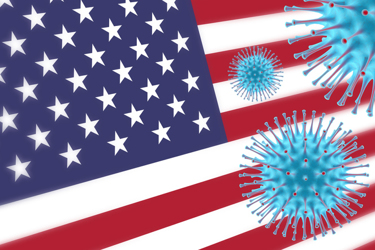FDA's COVID-19 PREPP Initiative Summary Report — Key Takeaways For Manufacturers
By Madeleine Giaquinto, Manager of Regulatory Affairs, Greenleaf Health, Inc.

In January 2021, as one of his last official acts as the Commissioner of the FDA, Stephen Hahn, M.D., published the FDA COVID-19 Pandemic Recovery and Preparedness Plan (PREPP) Initiative Summary Report.1 The PREPP report is the culmination of work performed by the FDA’s PREPP Initiative, which launched in April 2020 to examine lessons learned from the agency’s response — spanning FDA policies, processes, operations, communications, and intra-agency coordination — to the global COVID-19 pandemic.2 The FDA asked an independent non-government organization to conduct an objective review of its ongoing COVID-19 response and to summarize findings in the PREPP report. To that end, the third-party organization solicited insights from key FDA staff and external stakeholders, collated lessons learned, and suggested 12 potential “action areas,” bucketed across three overarching themes, where change could be implemented to improve resiliency against the current pandemic and to strengthen preparedness for future public health emergencies.
In publishing the PREPP report, the FDA caveated that it is not required to implement the third-party’s suggested action areas but that it will carefully review such recommendations in light of current statutory authorities and available resources.3 Additionally, the agency will continue to evaluate its regulatory activities moving forward as it continues its COVID-19 response and, thus, may consider additional or alternative lessons learned in the future. This article provides a brief overview of the PREPP report’s overarching themes and highlights key regulatory insights for manufacturers in light of two action areas in particular.
Overarching Themes And Action Areas
The PREPP report is largely dedicated to detailing findings in response to two questions: (1) what the FDA did in response to public health threats posed by COVID-19; and (2) what the FDA could do to enhance its response to COVID-19 and to future threats (i.e., the 12 potential action areas). Both sets of findings are presented under three overarching themes: (1) accelerating FDA’s immediate COVID-19 response; (2) selectively sustaining and scaling regulatory innovation; and (3) enhancing future pandemic preparedness.
1. Accelerating Immediate COVID-19 Response
First, the PREPP report describes FDA’s work to enhance the efficiency and transparency of its ongoing regulatory activities during the pandemic. To advance the development of COVID-19 vaccines, therapeutics, and diagnostics, the agency issued a slew of guidances supporting industry with respect to this endeavor. In addition, the FDA implemented processes and tools aimed at maintaining the flow of product review and managing a groundswell of emergency use authorization (EUA) requests and new drug application submissions for COVID-19-related products. For example, the Center for Devices and Radiological Health (CDRH) posted EUA submission templates to aid sponsors requesting EUAs. The agency also boosted transparency around its scientific decision-making, in order to educate the public and ease vaccine hesitancy, by broadcasting Vaccines and Related Biological Products Advisory Committee (VRBPAC) meetings for the Pfizer/BioNTech and Moderna vaccines.
Under this overarching theme, the potential action areas identified include: continuing to plan and prepare for review of COVID-19 medical products (Section 3.1); strengthening EUA processes and supporting tools (Section 3.2); strengthening COVID-19-related communications with industry, external stakeholders, and the general public (Section 3.3); and deepening U.S. government partnerships (Section 3.4).
2. Selectively Sustaining and Scaling Innovations
Next, the PREPP report highlights FDA’s engagement with innovative regulatory activities during the pandemic. These activities included release of segmented and targeted guidance, such that industry was made more frequently aware of the most relevant and up-to-date information.4 The use and sharing of COVID-19-related real-world data (RWD) among public health stakeholders, including FDA, became a huge accelerator in understanding the coronavirus disease and quickly initiating the development of capable medical countermeasures. Additionally, the agency utilized alternative approaches to conducting inspectional work when on-site inspection capability became limited at the outset of the pandemic due to social distancing and travel restrictions. Such alternative approaches included use of remote records review and information made available under the Mutual Recognition Agreement (MRA) for products evaluated by the EU, the U.K., and other qualified health authorities. Alternative approaches to inspectional work are discussed further below.
Under this overarching theme, the potential action areas identified include: consideration of how to carry forward interactive engagement with innovators and industry (Section 3.5); creation of an environment conducive to sustained innovation in clinical trial conduct (Section 3.6); collectively strengthening policy guidance development and transition processes (Section 3.7); enhancing real-world monitoring of COVID-19 products (Section 3.8); and continuing to evolve and optimize inspectional operations, building on the COVID-19 experience as a catalyst (Section 3.9).
3. Enhancing Future Pandemic Preparedness
Lastly, the PREPP report discusses the agency’s undertakings with respect to its longer-term pandemic preparedness capabilities. For example, the FDA engaged in forums that were established to cultivate and coordinate development of COVID-19 therapeutics and vaccines through use of master protocols, such as the Accelerating COVID-19 Therapeutic Innovations and Vaccines (ACTIV) consortia. Additionally, the FDA invested in supply chain risk surveillance technologies and expanded data analytics modeling across the drug, medical device, and food supply chains. Supply chain surveillance and resiliency is discussed further below.
Under this overarching theme, the potential action areas identified include: strengthening supply chain surveillance for regulated products (Section 3.10); developing emergency management capabilities and approaches (Section 3.11); and developing a regulatory framework to encourage broader use of adaptive trial designs and master protocols (Section 3.12).
Key Action Areas For Manufacturers
While action areas identified in the PREPP report span FDA’s regulatory processes and product life cycles, several may be particularly important to manufacturers of FDA-regulated products, including the evolution and operationalizing of FDA’s inspectional operations (Section 3.9) and the strengthening of its supply chain surveillance work (Section 3.10). These potential action areas are important for manufacturers because they indicate that the FDA’s activity, guidance, and/or communication regarding modernized regulatory requirements with respect to inspections and supply chain surveillance may be under development, and opportunities for engagement with the agency on the development and implementation of such new approaches may be forthcoming.
Evolve and Optimize Inspectional Operations
In March 2020, then-Commissioner Hahn suspended most foreign and domestic inspections of facilities that manufacture FDA-regulated products in order to reduce the spread of COVID-19, although “mission-critical” activities continued.5, 6 It wasn’t until July 2020 that on-site, prioritized domestic inspections resumed, and only on a limited basis (i.e., depending on the local risk of COVID-19 infection).7 Thus, safe on-site inspection capability remained (and continues to remain) limited.
To address the growing backlog of inspectional work created by the pandemic, and to maintain the review of medical product applications, the agency employed a suite of alternative tools under several of its authorities. First, the FDA leveraged its authority under Section 704(a)(4) of the Federal Food, Drug, and Cosmetic Act to make over 400 records requests “in advance of or in lieu of” inspections of certain drug manufacturing facilities,8 allowing some of its review work to occur remotely. This meant that prioritized inspectional work, requiring on-site personnel, could be done in an abbreviated, safer manner. Second, FDA leveraged flexibilities under the MRA, allowing it to rely on information from regulatory reviews conducted by the EU and other health authorities, shoring up limited FDA resources for higher risk sites.
The PREPP report discusses the potential for further adoption of these approaches, including reviewing its current authority to conduct Section 704(a)(4) records requests and exploring expanded use of such records requests across other types of FDA inspections not explicitly mentioned in Section 704(a)(4), as well as expanded use of other remote assessment functions. To further this optimization, the agency is undertaking a comprehensive risk-based assessment of its inspectional operations to develop a better understanding of risks and benefits associated with preannounced inspections, remote records review, and other remote assessment activities. To coordinate the implementation and governance of such innovative approaches, the FDA is establishing a dedicated body called the Intra-Agency Inspectional Affairs Council (IIAC).
Looking ahead, the PREPP report highlights key areas where the FDA could further increase the effectiveness and resiliency of its inspection programs. In the short term, the FDA could enhance communications with industry about expectations and how it plans to conduct inspectional activities. Notably, on Jan. 29, 2021, the agency demonstrated its commitment to setting expectations in this regard through issuance of revised Q&A guidance (initially issued in August 2020) implementing an interim process for communicating issues identified in Section 704(a)(4) records requests that are made “in advance of or in lieu of a pre-approval or pre-license Inspection.”9 This means that following review of requested records, the agency plans to convey identified issues to respective facilities and will weigh formal written responses regarding those issues before making determinations on applications in question.
Moreover, in the longer term, the PREPP report notes that there is still space for FDA to move toward strategic, comprehensive modernization of alternate inspectional capabilities, including the scaled use of virtual technologies with adequate streaming infrastructure, secure databases holding sponsor information for streamlined review, and aligned approaches with other health authorities around the globe. To that end, the agency could also develop a framework to quantify and measure the effectiveness of such a strategy (through pilot programs, etc.) in order to codify this modernization.
Strengthen Supply Chain Resilience
In addition to strains placed on the agency’s entrenched regulatory processes for conducting on-site inspections during COVID-19, the PREPP report discusses enormous strains placed on supply chains for crucial medical products. These strains were created in part by surging demands for certain products and also by disruptions in global manufacturing operations due to worker safety concerns. Disruptions in supply chains have led to shortages, and risks of shortages, of essential products like ventilators, hand sanitizer, personal protective equipment (PPE), testing supplies, vials, and syringes, as well as certain critical care drugs (e.g., Propofol, azithromycin, etc.).
To address these shortages, the FDA wielded EUAs and guidances to increase the availability of certain high-demand products, specifically for COVID-19 diagnostics and protective medical devices. The PREPP report acknowledges implementation efforts underway at the agency that aim to strengthen supply chain surveillance and risk-mitigation capabilities moving forward, including four distinct bodies of work. First, CDER set up a Supply Chain Surveillance Task Force that analyzed supply chain and shortage data to detect and mitigate risks. To accompany these efforts, the task force is implementing an integrative data analytics platform to further support supply chain surveillance. In another example, the CDRH began collecting information from certain device manufacturers, as directed under the Coronavirus Aid, Relief, and Economic Security (CARES) Act, indicating a discontinuance or interruption in manufacturing “that is likely to lead to a meaningful disruption” in supplies during a public health emergency.10
Additionally, the FDA, via CDRH, engaged in a memorandum of understanding with the National Institutes of Health and the Department of Veterans Affairs to inform and support 3D printing of PPE and other important supplies. Lastly, the PREPP report notes development of FDA’s Essential Medicine’s List, directed under Executive Order 1394411 and composed of 227 essential drugs, biologics, and medical devices, as a way to shore up supplies of the most crucial medical countermeasures.12
Looking ahead, the PREPP report highlights key areas where the FDA could further strengthen supply chain resiliency. For one, the agency could develop finer data analytics and risk surveillance and mitigation mechanisms that can be scaled and applied across FDA-regulated products. The FDA could also more sharply focus on proliferating new manufacturing technologies, like advanced/continuous manufacturing and artificial intelligence/machine learning (AI/ML) for operation and quality control management. Specifically, the PREPP report notes the agency’s potential opportunity to build out its current regulatory frameworks at CDER, CDRH, and the Center for Biologics Evaluation and Research (CBER), incorporating these new technologies. This would involve providing guidance on the development, validation, and processes of AI/ML in the good manufacturing practice (GMP) context and on using analytical models designed to reduce process-driven lapses in quality. Notably, on Jan. 12, 2021, the FDA took steps toward answering this regulatory call through release of its AI/ML-Based Software as a Medical Device (SaMD) Action Plan, describing five forthcoming efforts aimed at furthering oversight of these technologies.13
Conclusion
In sum, the PREPP report lays out a comprehensive map of FDA’s efforts during the pandemic thus far and provides a robust framework for how the agency could enhance its regulatory capabilities both as it continues to combat COVID-19 and as it prepares for future public health emergencies. Although not obligated to implement any of the suggested action areas, considering the third-party recommendations only to be a snapshot in time and not contemplative of resource or statutory limitations, recent communications indicate the FDA is hyper-focused on addressing challenges discussed in the PREPP report, particularly in areas impacting those in the manufacturing space.
References:
- FDA, “FDA COVID-19 Pandemic Recovery and Preparedness Plan (PREPP) Initiative: Summary Report” (January 2021), available at https://www.fda.gov/media/145129/download.
- FDA, Speeches by FDA Officials, “Remarks on FDA Leadership to Accelerate the Recovery from COVID-19 to the Alliance for Health Policy” (August 2020), available at https://www.fda.gov/news-events/speeches-fda-officials/remarks-fda-leadership-accelerate-recovery-covid-19-alliance-health-policy-08202020-08202020.
- FDA Voices, “Pandemic Response, Pandemic Preparation” (January 2021), available at https://www.fda.gov/news-events/fda-voices/pandemic-response-pandemic-preparation?utm_medium=email&utm_source=govdelivery.
- FDA, “COVID-19-Related Guidance Documents for Industry, FDA Staff, and Other Stakeholders,” (last updated January 2021), available at https://www.fda.gov/emergency-preparedness-and-response/coronavirus-disease-2019-covid-19/covid-19-related-guidance-documents-industry-fda-staff-and-other-stakeholders.
- FDA Statement, “Coronavirus Disease 2019 Update: Foreign Inspections” (March 2020), available at https://www.fda.gov/news-events/press-announcements/coronavirus-disease-2019-covid-19-update-foreign-inspections.
- FDA Statement, “Coronavirus Update: FDA Focuses on Safety of regulated Products While Scaling Back Domestic Inspections” (March 2020), available at https://www.fda.gov/news-events/press-announcements/coronavirus-covid-19-update-fda-focuses-safety-regulated-products-while-scaling-back-domestic#:~:text=Today%2C%20we're%20announcing%20that,domestic%20routine%20surveillance%20facility%20inspections.
- FDA Statement, “Coronavirus Update: FDA prepares for resumption of domestic inspections with new risk assessment system” (July 2020), available at https://www.fda.gov/news-events/press-announcements/coronavirus-covid-19-update-fda-prepares-resumption-domestic-inspections-new-risk-assessment-system.
- Section 704(a)(4) does not extend to Bioresearch Monitoring Program Information (BIMO), Good Clinical Practice (GCP), or medical device inspection types.
- FDA Final Guidance, “Manufacturing, Supply Chain, and Drug and Biological Product Inspections During COVID-19 Public Health Emergency Questions and Answers” (January 2021), available at https://www.fda.gov/regulatory-information/search-fda-guidance-documents/manufacturing-supply-chain-and-drug-and-biological-product-inspections-during-covid-19-public-health?utm_medium=email&utm_source=govdelivery.
- FDA, “Medical Device Shortages During the COVID-19 Public Health Emergency” (last updated January 2021), available at https://www.fda.gov/medical-devices/coronavirus-covid-19-and-medical-devices/medical-device-shortages-during-covid-19-public-health-emergency.
- Federal Register, EO 13944, “Combating Public Health Emergencies and Strengthening National Security by Ensuring Essential Medicines, Medical Countermeasures, and Critical Inputs Are Made in the United States” (August 2020), available at https://www.federalregister.gov/documents/2020/08/14/2020-18012/combating-public-health-emergencies-and-strengthening-national-security-by-ensuring-essential.
- FDA, “Executive Order 13944 List of Essential Medicines, Medical Countermeasures, and Critical Inputs” (August 2020), available at https://www.fda.gov/about-fda/reports/executive-order-13944-list-essential-medicines-medical-countermeasures-and-critical-inputs.
- CDRH-FDA, “Artificial Intelligence/Machine Learning (AI/ML)-Based Software as a Medical Device (SaMD) Action Plan” (January 2021), available at https://www.fda.gov/media/145022/download.
About The Author:
 Madeleine Giaquinto is manager of regulatory affairs at Greenleaf Health, Inc. She provides clients with timely analysis of FDA regulations, policies, and guidance documents and strategic advice on FDA engagement regarding compliance-focused issues and good practice standards for FDA-regulated products. Giaquinto has worked in diverse settings across the life science field, including within legal, nonprofit, government affairs, and public health policy specialties, and has a robust set of skills and knowledge of each as they intersect with regulatory compliance and federal and state healthcare policy matters. She has a B.S. in biology from Georgetown University and a J.D. from George Mason University School of Law. You can connect with her on LinkedIn.
Madeleine Giaquinto is manager of regulatory affairs at Greenleaf Health, Inc. She provides clients with timely analysis of FDA regulations, policies, and guidance documents and strategic advice on FDA engagement regarding compliance-focused issues and good practice standards for FDA-regulated products. Giaquinto has worked in diverse settings across the life science field, including within legal, nonprofit, government affairs, and public health policy specialties, and has a robust set of skills and knowledge of each as they intersect with regulatory compliance and federal and state healthcare policy matters. She has a B.S. in biology from Georgetown University and a J.D. from George Mason University School of Law. You can connect with her on LinkedIn.

